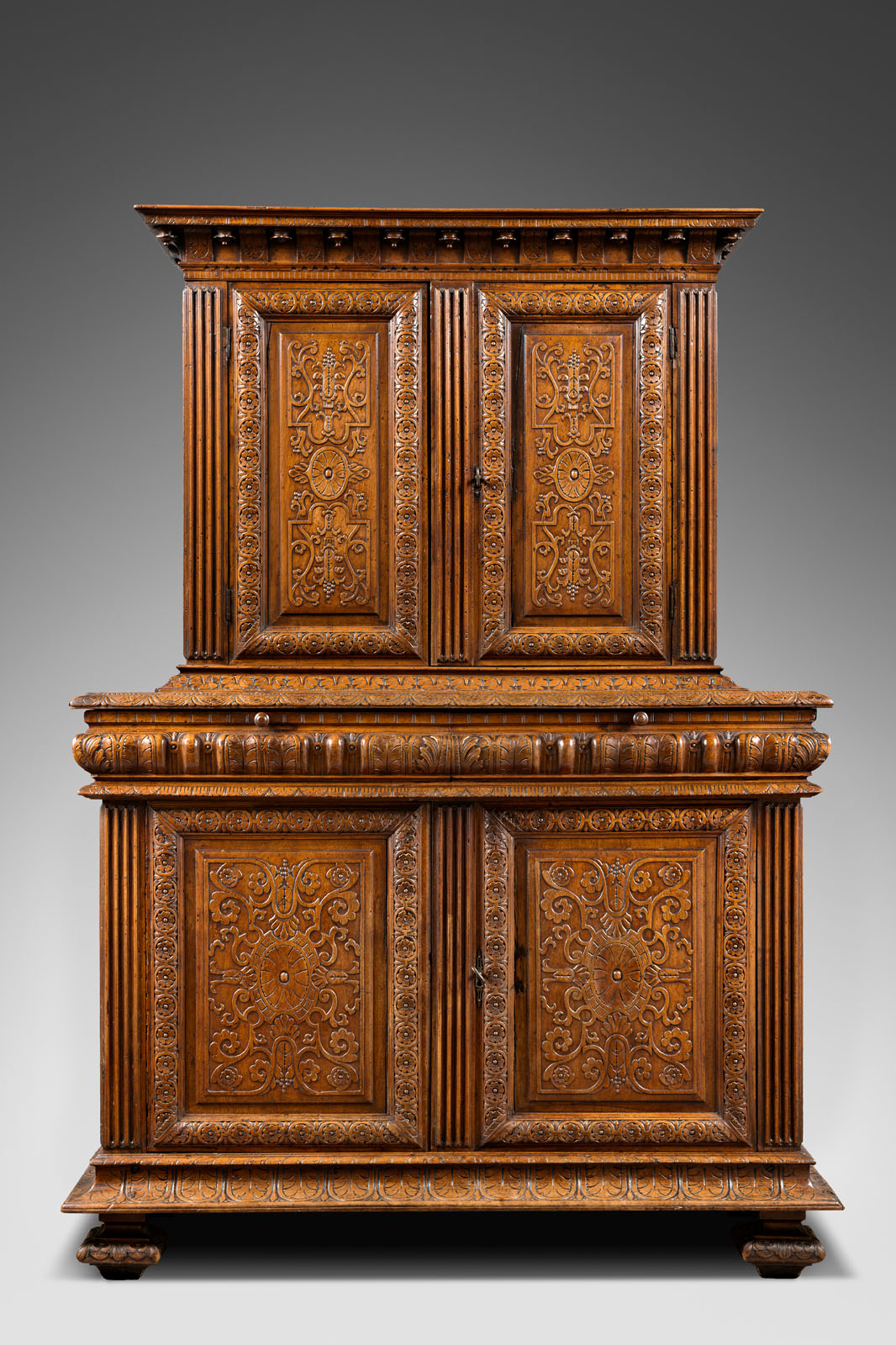Description
This perfectly built cabinet reflects the influence of architecture on furniture making during the Second French Renaissance. The cabinet’s two bodies are structred by three grooved pilasters carved on the lateral jambs and frame. Those pilasters give the cabinet a ternary rythm. The cabinet stands on a moulded base ornated with palm leaves and standing on sqare-shaped feet with vegetal motifs. An overlapping cornice with modillions and flowers tops the cabinet.
This cabinet opens thanks to foor door-leaves with recessed panels being secured in moulded frames adorned with flowers. They present a well executed vermiculure decor centred around a rose and accompanied by foliated scrolls and choux bourguignons.
The belt is framed by two palm leaf friezes. In the belt are located two drawers richly adorned with leaves in a strong relief.
The lateral facades of the cabinet’s lower body present a moulded frame with a five-petals flower in its center. On the upper body a long feather quill fill the whole panel. The belt’s ornaments continue on the sides.
This beautiful two-bodies cabinet is an exceptional example of the virtuosity of Lyons workshops around 1540-1570. The vermiculure graphic decor, stemming from the experiments of illustrators and engravers, allied with a perfect architectural structure using grooved pilasters are characteristic of the region. Indeed Lyons cabinet-makers profited from the extraordinary dynamism of the capital of Gauls where merchants, artists and patrons gathered. They have assimiliated and reinterpreted models from the most inovative artists thanks to the flourishing publishing industry. Using new technical and ornamental processes – such as vermiculure, one of the most typical Lyons decor – they gave their creations a strong identity.
Literature
Jacqueline Boccador, Le mobilier français du Moyen-âge à la Renaissance, Monelle Hayot, 2000
Edith Mannoni, Le mobilier lyonnais, Charles Massin, 2017

